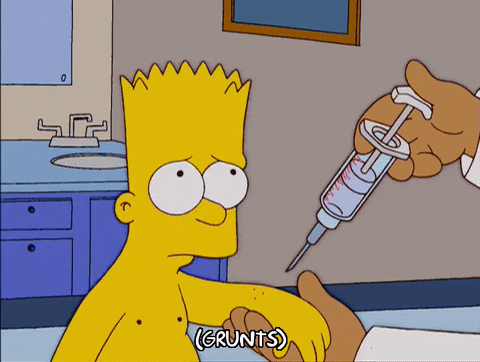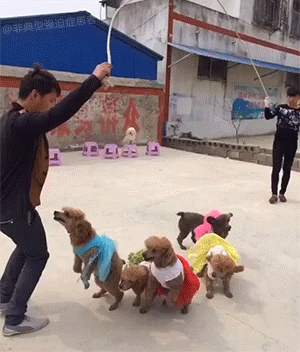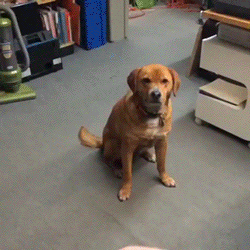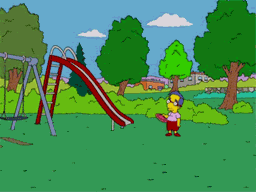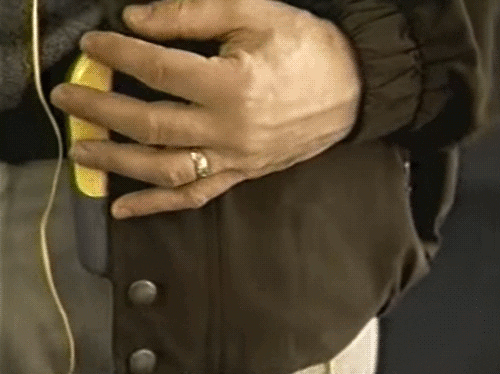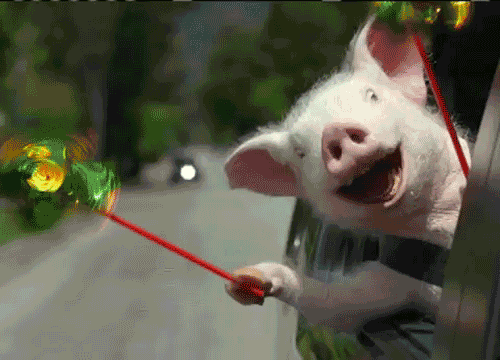Hi Everyone!
I know we're all excited to get back into the swing of things. Students are excited to go back to classes or have put off training online in favor of in-person training. Trainers are so excited to say, "So long, Zoom, and your tiny, tiny squares my students fit in! See you in person, class!" and I totally get that. I miss my students, I miss teaching, I miss everything about the teaching experience.
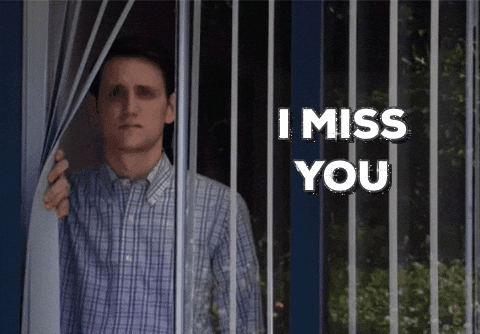
There is quite a bit of discussion about going back. Going back to classes, going back to teaching, all of it, but in a series of meetings I've had with a few different training outfits, there are some considerations that we really need to look at as trainers as we prepare to "go back to normal" and the first thing to hammer home is---
It's not going to look normal.
Even if we do everything "right", state regulations and guidelines are going to severely limit how we can interact with people. If we're outside, we have to remain at least 6' away, which is good, which is the right thing, but we'll be in masks. Students will be in masks. Sometimes students have to use our facial expressions and mouth reading to get what we're saying when we are teaching in fields anyway, so our students who depend on those extra cues from our faces to understand what's happening won't be available to them. Hard of hearing students will likely feel, and will be, left out.
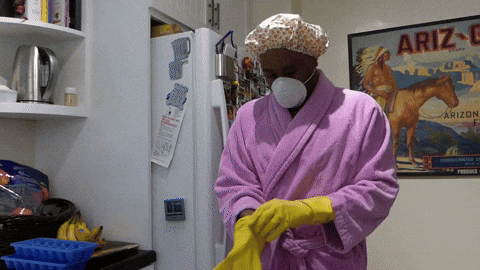 |
| Y'all are going to take me SO seriously in my PPE! |
Parents with young children at home - I can speak to this as a teacher who has a 2nd grader in my home. I could put the burden on my husband who is working at home (our insurance, income, everything is tied to his job right now, and we're fortunate that he is able to work from home. Not everyone is so fortunate). But it wouldn't be fair for me to say, "Hey, work from home and help our daughter with school, with reading, with all of it AND keep up with your meetings, work, while I leave the house to teach." She can't come with me, she needs support here, so for the teachers who have young kids, this is really hard.
And the students who have young children: We'll be limited to 10 people outside - that includes the teacher and maybe an assistant. That could be 8 dogs (one handler each) and an assistant - or, it might be 4 couples (4 dogs total) and an assistant. Those people who have always been welcome to bring their kids won't be able to ----
----and with summer camps rightfully closed right now, where are those young kids going to go?
 |
| The same can be said for staying at home all summer. |
We'll likely not be able to help all of those families if they have to choose between having only one person take the dog to class and just not going at all.
The burdens are real. We can say, "Woo! Epidemic over!" but for someone like me, a higher risk person, the risk doesn't go away because the state says, "We are open for business!", and we'll have a population of students who will feel similarly and are not physically or emotionally ready to go back to classes in person.
Spaces will be affected - right now, we have some state guidelines, but cities have different regulations. Parks might not allow groups of 10 if you train in public spaces, or like one of my training gigs, we teach at a school. They aren't letting anyone in (rightfully so) and since they are busy with students, accessibility of online content for their students, getting lockers cleared out for the kids (since no one has been let back into schools since the shutdowns, lunch boxes are NASTY, festering in lockers!), etc, your renting gig might be (and should be) last priority. You might be stuck in limbo.
So while you technically are allowed to go back, you might not be ABLE to go back yet. And that's hard to grapple with.
As trainers, I think it's going to be very important to recognize that while we have had vocal students champing at the bit to come back to class, and we are so ready to go back, we're not fully there yet. This abnormal is not over yet. That doesn't mean we shouldn't try, but there are a lot of things we need to consider, too, about HOW we teach.

When I work with students in a class setting, I definitely come within 6'. Often. If a dog is jumping, chewing on the leash, unable to sit or down, I can calmly help my student. I can demonstrate skills with their dog. I can show them the mechanics and talk about body pressure, or tension in the leash, I can do lots of things up close. I can size harnesses - or send my assistant over to do so. If there is an emergency, I need to be able to get in and help, but now, we can't.
We won't be able to interact inside of 6' with dogs and people.

We won't be able to come in close and have a conversation in class in hushed tones, "I see you're getting frustrated. You're doing a good job, but maybe you should take a break, come back next week. It's ok, he's over threshold, I see you, I understand. It's totally hard. I've been there, we see a lot of this," etc.
At 6 feet away, in front of the whole class, trying to talk loud enough our student hears it, it will likely be heard by other students, which will make what is usually an emotional conversation in private feel very pointed and directed, and might not be received the same way. An emotional connection and moment of a professional, intimate conversation up close with someone who is struggling can go really well as a teacher, and really wrong if that tool is no longer available.
It's going to be very different.
Just because we're "going back" doesn't mean it's going to be the same. For the trainers reading this, we're going to have to learn new skills all over again, the second time in a year, without a roadmap, without a lot of guidance, and with a lot of PPE.
We are all in this together but there is one more thing I'd like to bring up.
While so many things will be different when we do get to go back, I hope you don't stop communicating virtually with students or leaving that behind. What technology has done is allowed us to reach students who might have, for so many reasons, not have had access to, or felt comfortable in, positive reinforcement dog training classes.
I'm not going to speak in hushed tones here - dog training is very, very white. Especially in my little world of competition obedience. And yes, people of color (POC) are absolutely invited, but might not feel entirely welcome. Lots of glances that say, "What are you doing here" without ever saying a word. We need to do more, listen more, and be more supportive of POC who wish to train dogs in predominantly white spaces or support those who wish to jump into dog training as a profession. I'm so lucky to have two assistants whose voices are heard, and they are amazing dog trainers who I can't wait to share training environments with as they continue to gain experience, but I have a lot to learn from them, too.
Keeping online learning as an option for people who don't feel comfortable in white spaces is important.
Keeping online options for our community members who have social anxiety issues, or other hurdles to feeling totally comfortable in a dog training (loud, social, crowded) environment is absolutely a challenge. And they should have access to good dog training options and help.
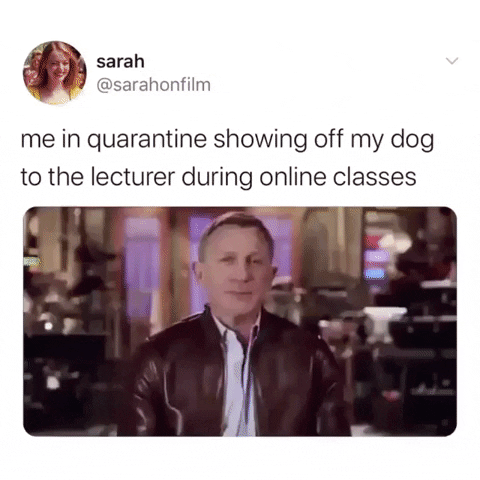 |
| Every lesson. Oh, this poor dog! |
Keeping free Youtube content online for people who can not afford dog training classes (because it's not the cheapest thing in the world!) whether they lost their job due to COVID19, or not, it shouldn't matter. Dog training should be accessible to everyone.
Keeping options open for people who are working three jobs, or essential workers who are working 48 on, 24 off - those schedules are really hard to work around, and dog training might be something they really want to do, but due to the nature of their job, they might not be able to commit. They deserve and need support and quality information, too.
So whatever happens with dog training and reopening, it's going to look different, but I don't think we should throw away everything we've learned in the last 10 weeks. I think it's important to keep a lot of these things in place as we continue to move forward in this new abnormal.
-M3



